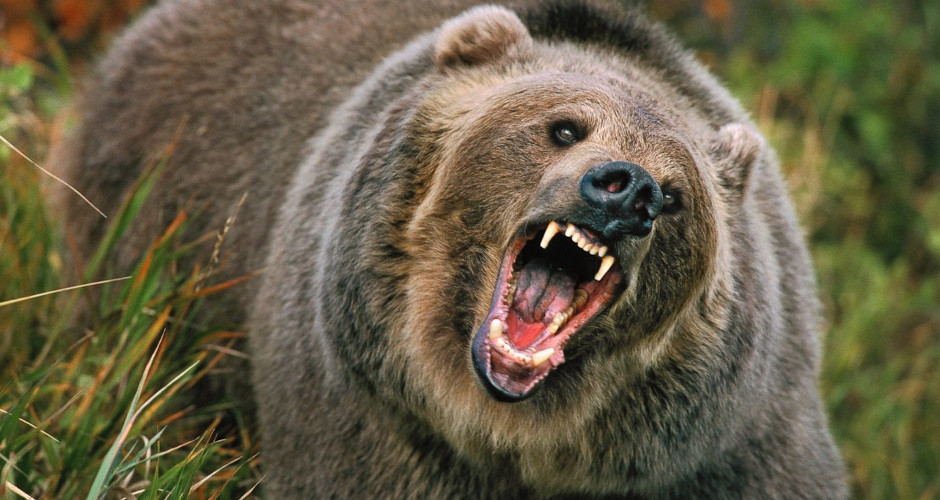Should Forest Service managers with direct oversight for Forest Plan Revision attend (and chair) meetings of an organization that could influence plan revision?
Forest Service personnel from the Salmon-Challis National Forest (SCNF) and Intermountain Region office are participating on the Interagency Grizzly Bear Committee (IGBC) in their official capacity while the SCNF is revising the Salmon National Forest and Challis National Forest plans.
Forest Supervisor Charles Mark (the signing official for the revised Forest plan), Planning and Budget Staff Officer Kim Nelson, and Public Affairs Officer Amy Baumer attended IGBC meetings in 2017 and/or 2018. Supervisor Mark chairs the Bitterroot Ecosystem Subcommittee and Baumer chairs the Bitterroot Ecosystem Information & Education subcommittee. A Deputy Regional Forester and a staff member representing Regional Forester Nora Rasure also attended IGBC meetings in 2017.
The IGBC web site states, “Grizzly bears do not currently occupy the Bitterroot Ecosystem” (map shown at igbconline.org). However, a large portion of the IGBC’s defined grizzly bear recovery area is within the SCNF (see Plan Revision Final Assessment, pages 257-258 at this link: https://www.fs.usda.gov/Internet/FSE_DOCUMENTS/fseprd587184.pdf). This means management for the SCNF portion of the Bitterroot Ecosystem is subject to review during the plan revision process.
The IGBC is comprised of numerous federal and state agency personnel, and its sole objective is grizzly bear recovery in the lower 48 states, including the Bitterroot Ecosystem Recovery Zone.
The Interagency Grizzly Bear Committee’s agency officials are using the IGBC to create and implement policy direction INDEPENDENT of the federal and state agency rule-making process. Here are a few policy directives from the IGBC’s 2018-2022 strategic plan:
“Obtain majority support among elected and appointed officials for grizzly bear recovery in all ecosystems by 2022″ (emphasis added in this and remaining quotes). In other words, the unelected federal and state officials who are members of the IGBC have decided, without public input, that they should convince our representatives to establish grizzly bear populations in the Bitterroot Ecosystem by 2022.
“Increase attention to recovery in … Bitterroot Ecosystem.”
“Identify pathways between NCDE [Northern Continental Divide Ecosystem] and [the] Bitterroot.”
“Implement effective, science-informed motorized access management across all recovery zones” (this is “agency-speak” for travel restrictions).
“Promote natural recovery of the [Bitterroot Ecosystem] population through immigration [migration].”
“Increase landowner and community tolerance for grizzly bears in linkage zones and the [Bitterroot Ecosystem] recovery zone by 2022.”
(The 14-page IGBC Five-Year Plan can be reviewed at this site: http://igbconline.org/wp-content/uploads/2018/03/IGBC-FIVE-YEAR-PLAN-GOALS-OBJECTIVES-2018-ACTIONS-FINAL-1.pdf)
Published notes of the December 2017 IGBC meeting record disbursement of “FY18 IGBC Information, Education & Outreach Grants” totaling $36,000 to implement these policies. Money went to Defenders of Wildlife ($2,900), Western Wildlife Outreach ($5,000), Emerging Wildlife Conservation Leaders ($2,250), Swan Valley Connections ($250), numerous National Forests ($21,850), Idaho Dept of Fish and Game ($2,000), Montana Fish, Wildlife and Parks ($1,500), and Salish-Kootenai Tribes ($250). The IGBC web site does not disclose the Committee’s source(s) of funding.
(See this link, page 4, for the list of grant recipients and projects: http://igbconline.org/wp-content/uploads/2018/03/171212_Exec_Mtg_Summary.pdf)
In a December 13, 2017 article about the December 2017 IGBC meeting (by Josh Burnham at http://www.ypradio.org/post/wildlife-managers-lookout-grizzlies-bitterroot#stream/0 ), Kim Nelson noted that remote cameras and hair samples will hopefully confirm grizzlies are within the recovery area. She was also quoted as saying, “Data could be incorporated into upcoming travel plan revisions in some of the national forests in the ecosystem.” Implied, but not stated, is that “travel plan revisions” could occur as a result of wilderness recommendations made during Forest Plan revision. Wilderness recommendations could indefinitely restrict motorized access to areas adjacent to the Bitterroot recovery zone — areas that are currently mapped by the SCNF for wilderness evaluation (see https://www.fs.usda.gov/Internet/FSE_DOCUMENTS/fseprd606600.pdf).
The SCNF plan revision team has been unwilling to engage in “travel planning” that would expand administrative and public motorized access to Forest resources. But the agency is apparently willing to utilize “travel planning” to accomplish a grizzly bear recovery agenda!
Are you pleased that grizzly bear recovery is more important than your access to Forest resources?
Is it a good idea to encourage grizzly bear migration to an area where they can eat their favorite food (threatened and endangered fish species)? If the fish become extinct, the bears can seek other prey like elk calves and deer fawns. (Oh wait — did the “experimental, non-essential” wolf population leave enough deer and elk for the bears?)
Are you eager to have a grizzly bear encounter when you’re hiking, mountain biking, walking your dog, backpacking, horseback riding, camping, cutting firewood, or driving your ATV on the SCNF?
Do you approve of SCNF staff spending time and money on grizzly recovery efforts, while neglecting road and trail maintenance, construction of range improvements, hazardous fuels treatment, weeds management, recreation site improvements, and other “on the ground” work?
Supervisor Mark will tell you he “has to” promote grizzly expansion into this area. No, he doesn’t. Grizzlies will do just fine if they never expand into the Bitterroot Ecosystem. Other resources, however, will NOT do well if grizzlies move into the Bitterroot Ecosystem.
The revised Forest Plan should abolish the SCNF portion of the Bitterroot grizzly bear recovery area because grizzly bear migration or relocation will have serious cumulative adverse impacts to (1) threatened and endangered fish populations, (2) big game populations that are already decimated by wolf predation and catastrophic fire impacts, and, most important, (3) the safety of SCNF users and residents who live within or near the Forest boundary (who have also experienced the impacts of catastrophic wildfires and wolf introductions). It is common sense that people, big game, and near-extinct fish populations are far more important Forest plan considerations than a new population of grizzly bears.
All SCNF and Region 4 personnel who are members of the IGBC should immediately cease their participation in the Committee for the duration of the plan revision process. They have no credibility to participate in plan revision or make decisions about Forest Plan direction while they are simultaneously working to accomplish the policy agenda of this committee.


